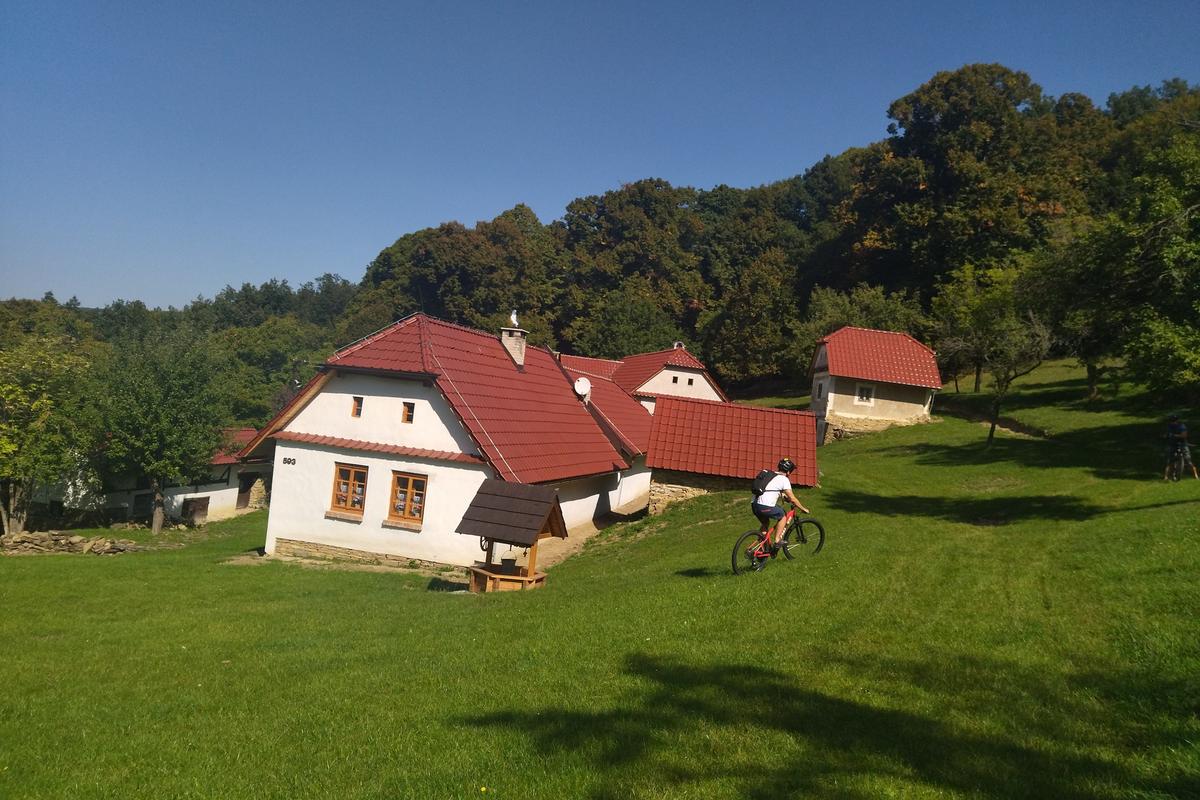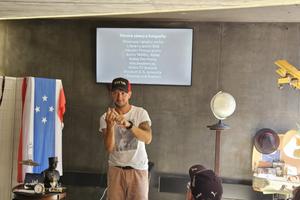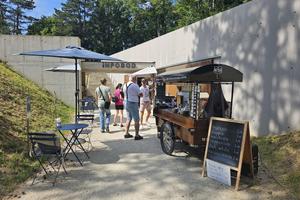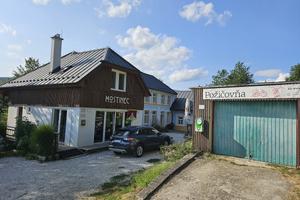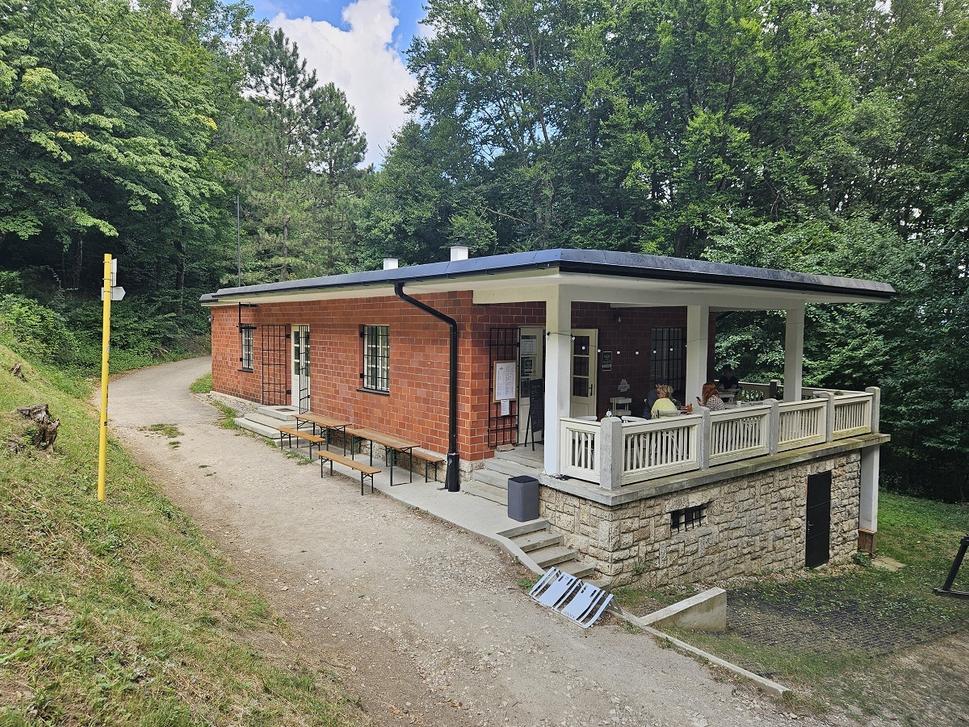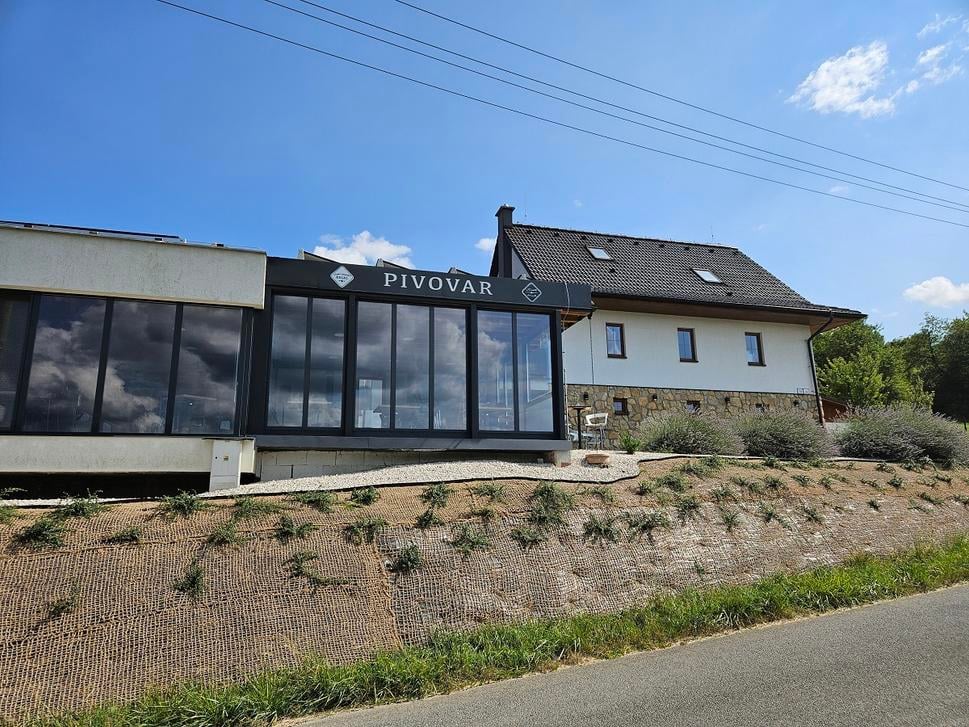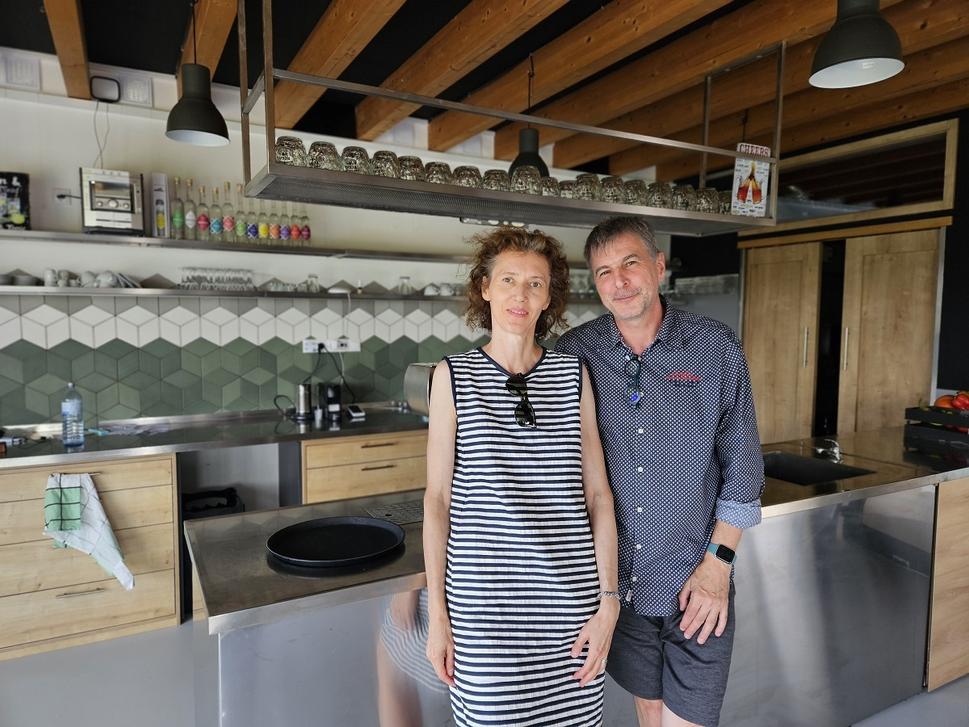You can read this exclusive content thanks to the FALATH & PARTNERS law firm, which assists American people with Slovak roots in obtaining Slovak citizenship and reconnecting them with the land of their ancestors.
When travelling to kopanice—a collection of scattered settlements in the hills of the Myjava region—from the town of Senica, one cannot overlook the village of Sobotište. Though linguistically tied to the Záhorie region, the northern part of the far west of Slovakia, the village geographically sits on the border of kopanice, a rolling landscape on Slovakia's western edge near the Czech Republic.
The mayor, Vladimír Jan Kružík, hails from the Czech Republic and identifies as a Silesian. He describes Sobotište as a place nestled between Záhorie and the kopanice region, with a dialect that blends elements from both areas. If this mix of cultures leaves you puzzled, welcome to the complexity of Central Europe.
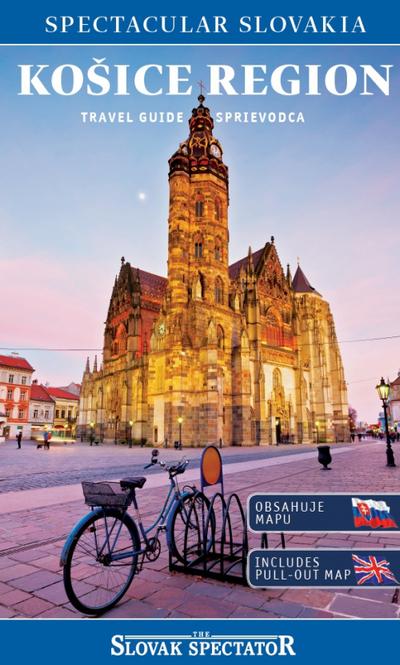
The heritage of Haban people
Sobotište, the hometown of Slovak national revivalist and cooperative movement founder Samuel Jurkovič, features a local museum named in his honour.
The village's main attraction, however, is the recently renovated Habánsky mlyn mill. The Habans, a group of Protestant Anabaptists, settled in Sobotište in the 16th century after being expelled from Moravia. They were known for their strict Christian faith, distinctive clothing, communal farming, and ceramics production. Today, the Habánske Museum, located in a former water mill and its adjoining yard, offers visitors a glimpse into this unique heritage.
The mill and the history of the Haban people draw foreign tourists to Sobotište. The mayor
notes that descendants of Habans from Canada have visited, though most tourists are Slovaks, local residents, and cyclists. The mayor plans to install a charging station for cyclists, making the village a convenient stop on the way further to kopanice. Unfortunately, there is currently no accommodation available in the village. However, visitors can enjoy a meal at the local pub and pizzeria.
In addition to the mill, Sobotište boasts noble mansions. One, privately owned and in a state of disrepair, is seeking funding for restoration. The other mansion serves as a museum, library, and municipal office, doubling as an information centre for tourists. The library also displays regional products on a table, but only during the week.
Štefánik as a brand to sell
The name Milan Rastislav Štefánik resonates far beyond Slovakia, where he was voted the greatest Slovak in history. His legacy has become a well-known brand, featured on a variety of products and souvenirs available at the mound on the hill Bradlo, above the town of Brezová pod Bradlom, the final resting place of this multifaceted figure, who was a politician, general, and astronomer.
The road to Bradlo from Brezová pod Bradlom is a narrow, smooth stretch of asphalt. In the mornings, a mobile coffee cart sets up shop, with a few tables and chairs scattered nearby. In the background stands a modern concrete structure, seamlessly integrated into the landscape and resembling an airplane wing. This design subtly nods to the tragic death of Štefánik, who perished in an airplane accident in 1919.
Historical names of towns and villages in Myjava district
Today's territory of Slovakia was part of different monarchies throughout history, including the Austro-Hungarian Empire from 1867 until 1918. Until 1992, with the exception of the inter-war years 1939-1945 during which the Nazi-aligned Slovak state existed, the territory was a part of Czechoslovakia. As a result, the current names of Slovak municipalities were different.
Here's a list of the largest municipalities in Myjava district with their historical names stated in brackets:
Myjava (Miava)
Brestovec (Brezóvölgy)
Brezová pod Bradlom (Berezó)
Hrašné (Hrasné)
Kostolné (Nagyegyházas)
Krajné (Karaj)
Poriadie (Erdősor)
Rudník (Rudnikirtvány)
Stará Myjava (Ómiava)
Vrbovce (Verbóc)
The full list of all Slovak municipalities, including their historical names, can be found at ww.geni.sk (in Slovak only).
The town, with financial support from the state, constructed this modern information centre, finally providing long-needed public toilets for the location. Matúš Tomáška, the operator of the Infopoint in the Bradlo area, serves as a guide, eagerly welcoming tourists into the centre's concrete building.
It functions as both a projection hall and a museum dedicated to the life and works of Štefánik. Tomáška offers a concise yet fascinating overview of the renowned astronomer's life. His presentation is especially captivating for children, inspiring them to follow in Štefánik's footsteps to pursue their dreams despite any challenges they may face.
After a brief 10-minute film, visitors can purchase souvenirs celebrating Štefánik and his legacy. The offerings include caps emblazoned with his surname's abbreviation and T-shirts featuring his graphic image.
"Most of our souvenirs are sourced from local producers, as we aim to support our community," says Tomáška.
Around lunchtime, the information centre buzzes with tourists, and the parking lot fills up quickly.
"When it gets crowded, finding parking can be challenging. We sometimes utilise a nearby meadow for overflow," explains Jaroslav Ciran, the mayor of Brezová pod Bradlom.
He acknowledges that parking can be an issue during rainy weather. However, unresolved disputes with the neighbouring municipality over the land under Bradlo, coupled with opposition from preservationists, have prevented the town from collecting parking fees or expanding the area.
Slovak tourists dominate
Tourists in the area are predominantly Slovaks from nearby regions, with a notable presence of school groups and Czech visitors.
"We also see Italian and French travellers, often en route to the spas in Piešťany, with which we collaborate," says Eva Zekucia of the Odkaz Štefánik civic association.
The region is popular among cyclists and motorcyclists, and Bradlo, situated on a well-known tourist route, frequently attracts backpackers making their way to the mound. Mayor Ciran is keen to reinstate the summer train service from Trnava, which was discontinued a few years ago.
"Bradlo offers a unique attraction, unlike a traditional castle," the mayor notes.
The mound now draws around 200,000 visitors annually, a significant increase from the 130,000 recorded in 2019.
Cottage you do not ascend to, but descend to
Bradlo offers new dining options for tourists.
The Bradlo Lodge, recently renovated with a tasteful touch, now serves simple fare such as halušky and quality craft beer from Piešťany's Žiwell brewery.
City-owned yet managed by the Slovak Cycling Club, the lodge attracts both cyclists and film enthusiasts with its summer cinema. Its location in a valley makes it accessible without a steep climb, though this also renders it somewhat inconspicuous.
Mayor Ciran plans to improve and unify the information system near the mound and to conceal dustbins, which when left uncovered, can damage the surrounding environment.
He also plans to install a giant chess board at the burial mound, as Štefánik was fond of it.
Tuscany as inspiration
In the Myjava region's kopanice, renowned for its flourishing plum and fruit trees used in brandy production, entrepreneurs Mariana Turáková and Ľuboš Straka have embarked on a venture to celebrate and sustain this storied tradition.
Their journey began in the town of Stará Turá, where they discovered an idle orchard, previously owned by Turáková's father. Drawing inspiration from their travels in Tuscany, Italy, Turáková and Straka are determined to infuse a family-centric ethos into their business, aiming to revive a legacy that faltered under the former communist regime.
In 2015, Ľuboš Straka and Mariana Turáková embarked on an ambitious project, establishing a distillery and adding a brewery to cater to the summer season. Straka, a technologist and brewer, recalls, "At that time, there were no distilleries in the region where you could buy homemade brandy. So we decided to build one." Turáková, his life and business partner, oversees the family's operations, including finances and event organisation.
Their venture, named "Turák & vnuk" (grandson), pays homage to family traditions, despite uncertainty about whether their son will eventually take over the business. Straka's father-in-law, who has no sons of his own, helps with the technical aspects of the brewery and distillery.
"My father even bottles the beer, and I'm the one who puts the labels on by hand," Turáková says.
The entrepreneurs primarily market their craft beer through their own restaurant and supply kegs for family gatherings, local markets, and cultural events.
"We also offer a plum beer, ideal for the plum festival," notes Turáková.
Their attempt to distribute the beer to local pubs ended in disappointment as many pub owners lacked the expertise to handle unfiltered and unpasteurised brews. Additionally, the high cost of craft beer makes it less accessible to local consumers. The entrepreneurs have opted against selling to supermarkets due to the low profit margins and high volume demands imposed by traders.
The brewery has the capacity to produce 180 hectolitres of beer each season, translating to approximately 36,000 bottles. The owners are dedicated to maintaining the use of traditional glass bottles and have no intention of switching to cans, which are generally used for pasteurised beer—a product they do not offer.
Expansion into gastronomy did not work
Over time, a taproom and bar were added to the distillery and brewery.
"It happened so naturally. Our customers were hungry after tastings, so we started serving them, for example, grilled meat," Turáková recalls of their foray into the gastronomy business.
Initially, the owners opted to lease the restaurant rather than manage it directly. However, this arrangement proved problematic. This year, they decided to take over the restaurant themselves and are currently renovating it, citing poor experience with tenants who struggled to attract patrons.
The restaurant had previously operated only on weekends or for private events, such as company gatherings and family celebrations.
"We even hosted a smaller wedding here," Turáková notes, highlighting the pub's capacity of 50 people and its charming terrace with a view of kopanice.
Looking ahead, Turáková indicates that they plan to manage the restaurant themselves during the summer weekends.
"If we find a quality chef, we might consider leasing the business again," the co-owner adds.
We are not giving up
The company's clientele includes businesses and cottagers—many from Bratislava—as well as cyclists and tourists.
"However, we don't see families with children among the cyclists; the trails here cater more to experienced mountain bikers. Moreover, cyclists typically ride early in the morning and don't drink much at that time," explains Straka.
The peak season was in 2019. Since then, the family-owned business has faced challenges from the pandemic, lockdowns, and ongoing economic pressures.
"We continue to feel the effects of Covid-19, inflation, and the energy crisis this season. People are cutting back, and demand is half what it was last year," admits Turáková.
According to her partner, Slovaks prefer heading to the seaside, where they can enjoy a beer for €6, over staying local for a drink priced at €2.50. Moreover, last year's poor fruit harvest led to a significant drop in distillery demand. Meanwhile, operating costs for the business have been rising.
Fortunately, they invested approximately €30,000 in photovoltaic panels, which now cover the entire roof of the restaurant and the adjacent kitchen. This investment has proven advantageous, as both spirit and beer production require substantial cooling, consuming considerable amounts of electricity.
The Turáks' distillery exclusively uses locally sourced fruit, with a particular emphasis on plums, pears, and apricots from southern Slovakia.
"We don't distill imported macerates because we can't ensure the quality," says Turáková.
In addition to producing spirits and beer, the distillery also offers wine and is exploring the creation of chokeberry liqueurs.
Looking ahead, the co-owners plan to focus on company tastings and team-building events. While they have completed a project for a small hotel, it remains in the planning stages for now.
Inn a good location
Travellers heading from Stará Turá to the Veľká Javorina hill in the White Carpathians will encounter a large inn that Braňo Uherek acquired in a state of disrepair eight years ago. Transforming the derelict building into a vibrant restaurant and guesthouse, Uherek was soon joined in this endeavour by his wife, Lucie Uherek Meisner.
Uherek Meisner recalls that her husband had long admired the inn during his frequent trips to his nearby cottage before deciding to purchase it. The inn's commanding hillside position, offering breathtaking views of the valley below, was a key factor in his decision.
At the time of purchase, the inn was in severe disrepair, with a leaking asbestos roof. The Uhereks invested several years in meticulous restoration, using traditional techniques to maintain the building's historical character, including preserving the stone foundations and mud brick walls. Inside, they employed clay plaster to retain the inn's rustic charm. The structure's distinctive blue façade and a large wooden spoon carved by a local artisan now make it a local landmark.
Regrettably, their renovation was completed just as the coronavirus pandemic began, impacting their plans.
Challenging running restaurant in kopanice
The inn, named U Klačkov after the nearby settlement, is now in its third season of operation. Its concept centers on home-made Austro-Hungarian cuisine crafted from locally sourced ingredients. Despite their passion, the owners lacked prior experience in the restaurant industry.
Uherek Meisner acknowledges the difficulties of running a gastro business in this region, which is why the inn operates only on weekends.
She has decided to shift her focus away from daily restaurant management. Instead, she envisions a future centered on organising events at the inn for both tourists and local residents. Previously, she hosted yoga sessions and workshops on traditional crafts such as sheep wool processing and beeswax candle making.
Looking ahead, Uherek Meisner plans to lease the restaurant to experienced culinary professionals who can dedicate themselves to the trade. Meanwhile, she and her partner Braňo will concentrate on their new ventures, including corporate and community events and the planting of fruit orchards.
Cross-border and local cooperation work
During The Slovak Spectator's visit, the inn welcomed its local herb supplier from the nearby village of Moravské Lieskové. The zucchini are sourced from local farmers, and the meat comes from Moravia. Rather than offering Kofola, the local coke-like soft drink, the inn serves apple cider from regional orchards, with syrups also hailing from Moravia. The inn has further embraced sustainability by producing tableware and glasses from recycled beer and wine bottles at a nearby Moravian glass factory.
Conveniently located on the route to Veľká Javorina, a mountain straddling the border between Slovakia and the Czech Republic and popular with hikers and cyclists, the inn is well-placed to serve visitors.
To accommodate the influx of tourists, the owners have introduced an electric bicycle rental service and provide a charger for electric cars. Veľká Javorina, a symbol of Czech-Slovak camaraderie, draws visitors year-round, including many from the Czech Republic as well as local regulars.
Spectacular Slovakia travel guides
A helping hand in the heart of Europe thanks to our Slovakia travel guide with more than 1,000 photos and hundred of tourist spots.
Our detailed travel guide to the Tatras introduces you to the whole region around the Tatra mountains, including attractions on the Polish side.
Lost in Bratislava? It's impossible with our City Guide!
See some selected travel articles, podcasts, traveller infoas well as other guides dedicated to Nitra, Trenčín Region, Trnava Region and Žilina Region.


